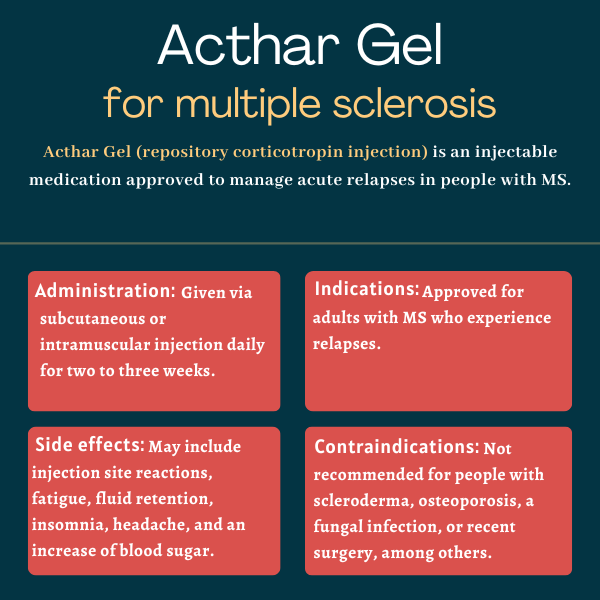FAQs about Acthar Gel
Acthar Gel was approved by the U.S. Food and Drug Administration (FDA) for the treatment of acute relapses in people with multiple sclerosis (MS) in 1972. It was first approved in the U.S. in 1952 for other inflammatory or autoimmune diseases. In 2010, the FDA reviewed the label and confirmed there was sufficient scientific and clinical evidence to support all its indications.
Acthar Gel may cause harm to a developing fetus. Patients should talk with their healthcare team and only use Acthar Gel during pregnancy if the potential benefits justify the possible risks to the fetus.
The prescribing information for Acthar Gel does not report a direct interaction between the medication and alcohol. However, given that alcohol can interfere with some medications and disease symptoms, patients are advised to discuss this topic with their healthcare provider.
According to Mallinckrodt Pharmaceuticals, which markets Acthar Gel, patients with multiple sclerosis (MS) taking the therapy reported clinically significant improvements in physical and psychological status after two months of treatment with Acthar Gel. Improvements in eye problems due to optic neuritis have been reported as early as after 15 days of treatment with Acthar Gel. Nonetheless, it is important to keep in mind that each patient may respond to treatment in a different way.
Hair loss has not been reported as a side effect of Acthar Gel. Patients who develop Cushing’s syndrome while on Acthar Gel may have greater deposits of fat resulting in weight gain; however, this usually resolves after treatment is stopped. Patients should be monitored for these signs and should report any symptoms to their healthcare provider.
Related Articles

 Fact-checked by
Fact-checked by 






